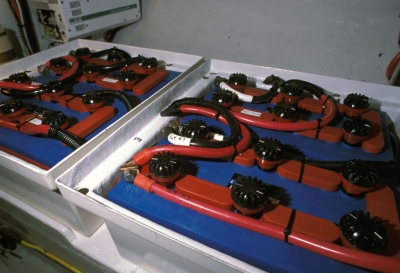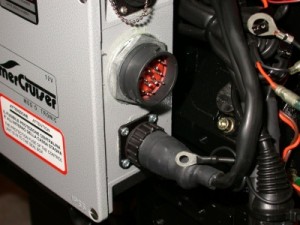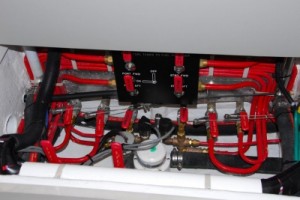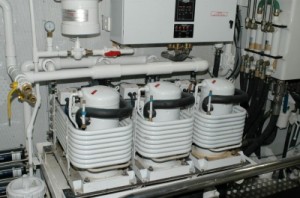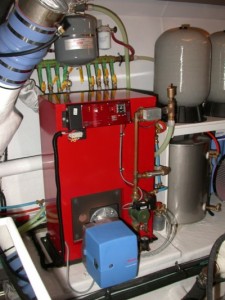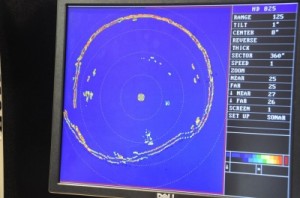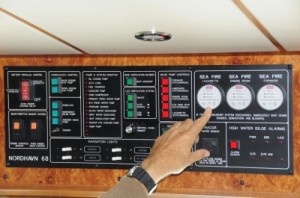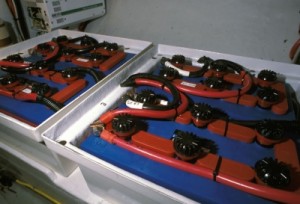When it comes to boats, simple is better … or is it?
By Bill Sisson
Photos by Steve D’Antonio
It’s virtually impossible to purchase an engine today over 100 HP that isn’t computer controlled and with the obligatory data port. Contrary to the hysteria that preceded their release, electronic engines have proven both reliable and efficient.
I talked to a retired marine systems guy some time back who offered me this bit of wisdom: If you want to have the most fun on your boat, if you want to keep the wind in your face and the sun on your back, keep your boat as simple as possible.
Simple is better, right?
Well, that depends on your definition. In the feature-rich world of boats that can crab across the surface with the flick of a joystick and cars that can park themselves, we are not going back to a cedar bucket and a pair of oars. That kind of simple is not realistic, nor is there much demand for it.
But, simple as a synonym for elegant — as in a well thought-out, well-executed design or installation, one that is so “simple” that it seems intuitive and easy to use to the consumer — is something else again. Achieving that kind of simplicity, making the complex seemingly disappear, is hard but well worth the effort.
Fuel systems can be both complex and easy to manipulate at once. This system offers the user versatility, yet it’s well labeled and thus easy to operate.
I agree with marine consultant Steve D’Antonio that simple — as in stripped-down — is not a cure for what ails the marine industry. We are not going to sell the public on boat camping circa 1950. Consumers today expect the same sort of creature comforts in their boats that they have in their homes, and it’s our job to deliver that in a package that is as efficient, seaworthy and reliable as possible.
Chilled water and hydronic diesel heat can make life aboard as comfortable as home. However, these systems require rigorous adherence to manufacturer installation guidelines in order to ensure the greatest degree of reliability.
In an article in the June/July issue of Professional BoatBuilder magazine titled “A Case for Complexity,” D’Antonio makes the argument that complexity and reliability are not mutually exclusive. A self-described fan of anything that makes boating more affordable and efficient, D’Antonio, the technical editor for Professional BoatBuilder andPassageMaker magazines, writes that he doesn’t view “simplicity” as a remedy for the problems of boatbuilding in 2012.
“Searchlight” sonar, equipment such as this, once restricted to large scientific and military vessels, is now finding its way aboard recreational craft.
“In many cases, I feel it is a knee-jerk reaction to say ‘simple is a solution’ when really what we should be doing is designing and installing systems that work properly and are reliable,” D’Antonio told me in an interview yesterday. “Complexity has gotten a bad name, but I’m not accepting it. We shouldn’t be presenting simple as a solution to reliability problems.” He doesn’t believe the answer to quality or reliability issues is to strip out systems or make boats as bare bones as possible. That, he maintains, is a cop-out. Fix the problems, don’t run from them.
“We don’t have to sacrifice comfort in the pursuit of simplicity,” said D’Antonio, who has more than 25 years of experience as a boatyard manager, marine mechanic, electrician and consultant. “I don’t think something’s unreliable because it’s complex. I think it’s unreliable because it wasn’t well thought-out in many cases. We can still have an element of simplicity with systems that are relatively complex.”
As a corollary, I would add: Don’t make things more complicated than they need to be.
More sophisticated systems require more sophisticated monitoring capabilities.
What needs to change? For starters, designers, builders and installers need to do a better job of integrating systems into a boat, rather than taking the more typical piecemeal approach to design and installation. “It all has to live together if not work together,” he said.
Systems need to be easily accessible for repairs and regular maintenance. And no matter what piece of equipment is put into a boat, D’Antonio said, it is critical that the installer follow the manufacturer’s installation guidelines. Also, the builder or installer should provide the owner with schematics, documentation and sometimes instructions on each system, especially with custom setups. “Documentation is critically important, and it simplifies the complex,” he said.
More electrical gear often necessitates more electrical capacity. Both batteries and charging systems have grown to meet the demand.
Overall, D’Antonio said he’s optimistic that greater reliability can be achieved in an increasingly complex marine world. “I hear more of the right questions being asked,” he said. “I’m encouraged. Part of that is the pressure put on us by the economy. We have to be sharper if we want to be around. It’s self-preservation.”
It’s that simple.
Bill Sisson is the Editor-in-Chief of both Soundings and Soundings Trade Only. A version of this article first appeared on the latter’s website.
For more information on the services provided by Steve D’Antonio Marine Consulting, Inc. please e mail Steve at info@stevedmarineconsulting.com
or call 804-776-0981

